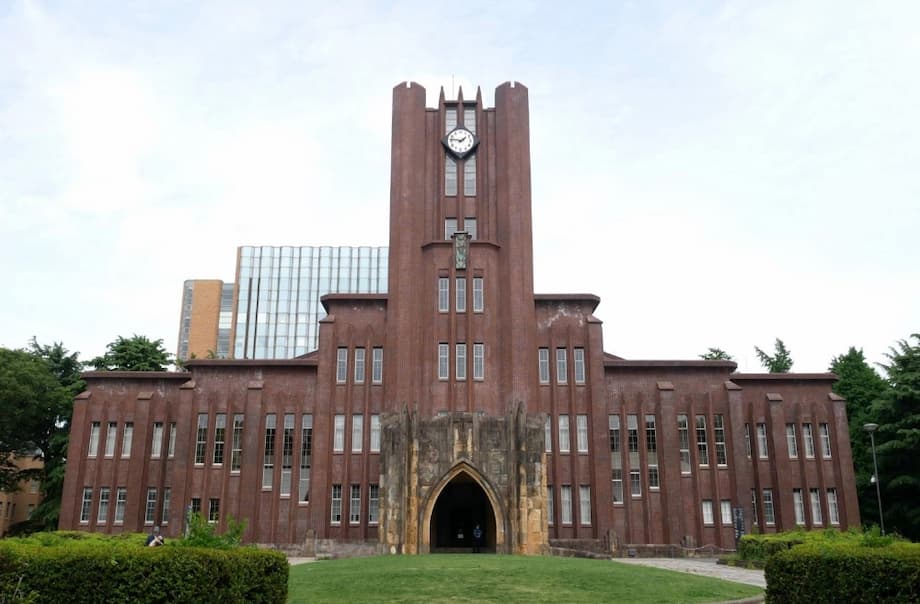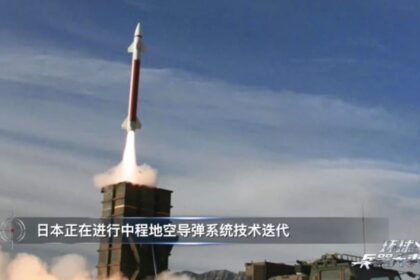A new milestone for Todai
The University of Tokyo has reached a record 26th place in the latest Times Higher Education World University Rankings, its best position since the table launched in 2004. It is the only Japanese institution in the global top 50 and has climbed for three straight years. Kyoto University placed 61st, down from 55th, while Tohoku University rose to 103rd and Osaka University advanced to 151st. At the very top, the University of Oxford retained first place for the tenth year in a row and the top 10 remained dominated by institutions from the United Kingdom and the United States.
The movement reflects broader shifts in Asia. China now has five universities in the global top 40, a record. Hong Kong placed six institutions in the top 200, also a record for the city. India ranked second worldwide for the number of universities listed, behind the United States. For students, the table carries practical weight. In Japan, a university’s placement in the Times Higher Education ranking can count toward immigration points for the Highly Skilled Professional visa, which can shorten the path to permanent residency for eligible graduates.
Domestically, the picture looks different because the national Times Higher Education Japan University Rankings focus on teaching and student experience. In that table, Tohoku University was number one for the fifth year in a row in 2025, the Tokyo Institute of Technology, now part of the Institute of Science Tokyo after a merger with Tokyo Medical and Dental University, ranked second, and the University of Tokyo ranked third. The global table emphasizes research power and citation impact, so it is common for the national and international results to diverge.
How the Times Higher Education ranking works
The Times Higher Education World University Rankings use 18 indicators grouped into five broad areas: teaching, research environment, research quality, industry links and international outlook. The model blends hard data with a large academic reputation survey. Research quality includes citation impact and measures of research excellence. The research environment captures research income and productivity, while the teaching pillar considers resources and learning atmosphere, including responses from student surveys in national tables. Industry measures reflect knowledge transfer, such as industry income and patents. International outlook covers the share of international staff and students and the extent of cross border collaboration.
No single input decides the final result. A university’s position reflects its overall profile. Sustained gains in citations, better staff to student ratios, stronger doctoral training, more global collaboration and increased industry partnerships can combine to lift an institution across several pillars over multiple years. The University of Tokyo’s steady rise suggests broad based improvements rather than a one time spike.
Why the University of Tokyo is climbing
The University of Tokyo’s research footprint is wide and deep. Subject tables on the Times Higher Education profile show strong showings across fields. Examples include business and economics around the global top 30, medical and health in the high 20s, engineering around the low 30s, life sciences around the 30 mark and physical sciences around the mid 20s. Computer science and social sciences also sit within competitive bands internationally, while arts and humanities trails these disciplines but remains inside the global top 100. These results align with the university’s reputation as a comprehensive research powerhouse.
Data on the Times Higher Education profile also point to a student to staff ratio of about 10 to 1 and an international student share around 18 percent. The university has added English language degree options in recent years and expanded partnerships with leading institutions worldwide. Those moves aid recruitment and collaboration, both of which show up in the international outlook and research environment pillars. Tokyo’s vibrant innovation ecosystem, with dense links to industry and government research agencies, supports funding and knowledge transfer that are captured in the industry metrics.
The University of Tokyo’s gains also track with a wider pattern in East Asia. Analysts have tied many improvements to rising investments in research, the growth of doctoral education and more selective hiring. In Hong Kong, for instance, recent jumps in the rankings were linked to stronger doctorate to bachelor ratios and better staff to student ratios, two signals of research intensity and student support. Japan’s leading national universities have been taking similar steps, although the pace and focus vary by institution.
How UTokyo stacks up in other rankings
Different global rankings reward different strengths, so positions can vary. In the QS World University Rankings 2026, the University of Tokyo is equal 36th. In the US News Best Global Universities listing, it sits at 84th worldwide, 14th in Asia and first in Japan. The Center for World University Rankings places the University of Tokyo among the world’s top institutions based on education quality, alumni outcomes, faculty standing and research performance.
Methodological choices shape these outcomes. QS places more weight on global academic and employer reputation as well as faculty to student ratios and internationalization. US News leans heavily on research output and field weighted citation impact across a large set of indicators. Times Higher Education blends teaching, research environment and research quality with industry and international outlook. A university with very high citation influence in select fields may climb in one system while an institution with broader strengths across many metrics rises in another. For prospective students and scholars, a simple rule helps: compare multiple rankings and look closely at subject tables, not just the single overall number.
Subject strengths and specialist recognition
The University of Tokyo often shines in science and engineering. In the US News subject tables it ranks inside the global top 10 for physics and space science, with strong positions across plant and animal science, molecular biology and genetics and chemistry. Medical and health fields continue to advance as well. A recent Brand Finance study of academic medical centers placed the University of Tokyo Hospital among the world’s leaders, including third globally for research strength and within the top 25 overall. That mirrors an emphasis on biomedical science across the university, supported by extensive hospital affiliated research.
Japan in a fast changing Asian landscape
Asia’s share of high ranked universities has expanded quickly over the past decade and remains on an upward path. China now has five institutions in the global top 40, led by Tsinghua University and Peking University. Hong Kong achieved a record six universities in the global top 200, with multiple campuses improving on metrics tied to research intensity, doctoral training and staffing. South Korea has a record four universities in the top 100. India’s presence in the table continues to grow, lifting it to second globally by the number of institutions listed.
The United States still anchors the top of the table, but the number of US institutions in the upper bands has edged down over recent editions. Analysts point to intensifying competition from Asian universities, evolving research collaboration patterns and changes in methodology that spread recognition more widely. The United Kingdom retains a strong grip on the top 10, capped by Oxford’s decade at number one. Within this shifting balance, Japan’s top universities have broadly held their positions. The University of Tokyo’s new high suggests that targeted improvements can still move the needle even as the field becomes more crowded.
What is driving the regional trend
Several forces are visible across the data. Governments and universities in East and Southeast Asia have invested in research facilities, doctoral education and academic hiring. Publication output and citation influence have grown as a result, especially in engineering, physical sciences, computer science and medical research. Many campuses have sought deeper global partnerships and expanded English language offerings to bring in talent and raise collaboration rates. Ratios that often predict success in the ranking, such as doctoral output, research income per scholar and staff to student numbers, have generally improved at the regional leaders.
What it means for students and employers
Rankings are only one factor in choosing a university, but they carry real world effects. In Japan, graduating from a highly ranked institution can contribute points toward the Highly Skilled Professional visa category, which in turn can shorten the route to permanent residency for those who meet the broader criteria. Employers also track international rankings as a quick signal of research capacity and talent concentration, especially in science and technology fields.
Location matters too. Tokyo ranks as the world’s second best student city in recent QS assessments, scoring highly on desirability and employer attitudes while offering relative affordability for many international students. The number of foreign students in Japan rose by about 21 percent as of May 2024, reflecting a broader shift in study abroad patterns toward Asia. For the University of Tokyo, a stronger global ranking, a deep research portfolio and a city known for safety, transport and job opportunities make for a compelling mix.
Prospective students should still look beneath the headline number. Subject strength, lab access, supervision, language of instruction, internship opportunities and support services all shape the student experience. The University of Tokyo’s model of a broad liberal arts foundation in the first two undergraduate years followed by specialization, combined with English language tracks in select programs, gives applicants different paths to match their goals.
Strength in science and medicine
The University of Tokyo’s profile is anchored by high impact science. Physics and space science rank among its strongest subjects, and engineering, chemistry and life sciences post consistent global performances. The university’s research centers range from atmospheric and ocean science to advanced studies on Asia and spatial information science. This breadth matters in rankings that reward both volume and influence of research. It also helps attract industry partnerships, which in turn support the industry pillar through funded projects and technology transfer.
Healthcare shows a similar pattern. The University of Tokyo Hospital and partners on the Kashiwa and Hongo campuses link clinical work with research at scale. In independent assessments that survey thousands of healthcare professionals, the hospital ranks among the most research capable academic medical centers in the world. That visibility feeds into broader perceptions of the university’s strengths in medicine, public health and biomedical engineering.
Challenges for Japan’s elite universities
Japan’s national universities often excel in resources and research outcomes but face headwinds on measures of international environment. Many have lower shares of international faculty and students than peers in Hong Kong, Singapore or parts of Europe. The University of Tokyo has worked to change that picture with new English language degree options and more exchanges, and its international student share near one in five points to progress. The merger that created the Institute of Science Tokyo reflects another path, regrouping strengths to sharpen research focus and improve student experience metrics in the national table.
Demographics and funding pressures are also part of the backdrop. A shrinking domestic student population makes international recruitment more important. Competition for top researchers is intense across Asia. Universities that continue to raise doctoral completion, publish in highly cited journals, attract industry partners and welcome more international scholars are the ones most likely to keep climbing. The University of Tokyo’s record result signals that those efforts are taking hold.
Key Points
- The University of Tokyo rose to 26th in the latest Times Higher Education World University Rankings, its best ever result.
- It is the only Japanese university in the global top 50; Kyoto University ranks 61st, Tohoku University 103rd and Osaka University 151st.
- Oxford retained number one for the tenth straight year, with the top 10 dominated by the United Kingdom and the United States.
- Asia’s presence grew, with China placing five universities in the top 40 and Hong Kong achieving a record six in the top 200.
- In Japan’s teaching focused national table, Tohoku University is number one, Institute of Science Tokyo is second and the University of Tokyo is third.
- The Times Higher Education model evaluates teaching, research environment, research quality, industry links and international outlook across 18 indicators.
- UTokyo’s subject strength spans physics, space science, engineering, chemistry, life sciences, medicine and social sciences.
- In QS 2026, the University of Tokyo is equal 36th; in US News, it is 84th globally and first in Japan.
- Tokyo ranks second among global student cities; international student numbers in Japan are rising.
- Placement in the Times Higher Education table can add immigration points toward Japan’s Highly Skilled Professional visa.












